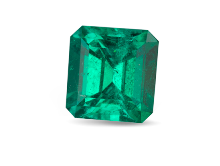Toanoi Precious stones, We Can Source Almost Any Stone
Alongside diamonds, the next “Big Three” gemstones are Sapphire, ruby, and emerald, they have been the most coveted and valuable gems throughout history. Known as the precious gemstones, they have adorned royalty, symbolized power, and captivated collectors for centuries.
High-quality rubies, sapphires, and emeralds are far scarcer than other gems, Rubies and sapphires (both 9 on the Mohs scale) are second only to diamonds in durability, making them ideal for everyday wear.
Their rich hues (ruby’s fiery red, sapphire’s deep blue, emerald’s lush green) are unmatched in intensity. These gems have been treasured by ancient civilizations, from Egyptian pharaohs to Mughal emperors.
EMERALDS

SAPPHIRES

RUBIES

EMERALDS

EMERALDS
Emerald is a variety of Beryl known for its vibrant shades of green to bluish-green.
REGIONS WHERE EMERALDS ARE FOUND
Colombia, Zambia, Brazil, Pakistan, Afghanistan, Russia, Madagascar and Zimbabwe.
Emerald has been sought after and prized by cultures across the world, with some examples of important stones surpassing the price of diamonds at auction.
While many emeralds exhibit a garden of inclusions within the stone, fine examples can be completely clean and yield prices far higher than included stones.
One factor to consider with Emeralds is its wearability and hardness. While the Emerald is a softer stone than Ruby and Sapphire it is still a suitable stone for everyday wear making it versatile enough to be set into many different types of jewelry.
Noteworthy sources of emeralds include Colombia, which is renowned for producing
some of the world’s highest-quality emeralds, particularly from the Muzo, Coscuez, and
Chivor mines. Other significant sources are Zambia, known for its deep green, high-
quality stones, and Brazil, where emeralds are found in various shades of green.
Afghanistan and Zimbabwe also contribute to the global emerald supply, offering
unique characteristics and colors. Each of these regions has its distinct geological
conditions that contribute to the quality and appearance of the gemstones.
SAPPHIRES

SAPPHIRES
Sapphire is a variety of corundum, known for a large range of colors from blue tones to greens, yellows, pinks, and purple tones.
REGIONS WHERE SAPPHIRES ARE FOUND
Sri Lanka, Myanmar (Burma), Thailand, Madagascar, Australia, and the United States (Montana).
The colors of each sapphire determined by their unique combinations of trace elements.
One of the most famous Sapphires in modern times is the engagement ring presented to
Princess Diana by Prince Charles; a special order piece designed by the first official crown
jeweler Garrard. Sapphires are very durable stones, alongside Ruby they are second hardest
only to Diamonds making them versatile stones suitable for everyday wear.
Prominent sources of sapphires include Sri Lanka, renowned for its high-quality blue sapphires,
and Myanmar, which produces deep, rich blue stones. Thailand, with its vibrant range of
colors, and Madagascar, known for both blue and color-changing sapphires, are also
significant suppliers. Australia, particularly Queensland, offers a variety of dark blue and
greenish-blue sapphires. Kashmir, though no longer an active source, remains famous for its
rare, velvety blue sapphires. Additionally, countries like Kenya, Tanzania, and Mozambique in
Africa contribute sapphires in diverse colors, further enriching the global market.
RUBIES

RUBIES
Ruby attains their distinct red tones from chromium which is the same as sapphire.
REGIONS WHERE RUBIES ARE FOUND
Afghanistan, Australia, Cambodia, India, Madagascar, Malawi, Mozambique, Pakistan, Sri Lanka, Tanzania, Thailand, the United States, and Vietnam.
A fine example of Ruby’s ideal color is known as “Pigeon Blood” which is known for its deep red tone and saturation of color. Perhaps the most famous Ruby, known as the “Sunrise Ruby” sold for a record-breaking $30 million at auction with a price per carat of USD 1.2 million. Rubies are very durable stones, alongside Sapphire they are second hardest only to Diamonds making them versatile stones suitable for everyday wear.
Notable regions where rubies are sourced include Myanmar (Burma), known for producing
some of the world’s finest and most valuable rubies, especially from the Mogok Valley. Thailand
is another significant source, where rubies are often found in large quantities, though with a
lower level of quality compared to Myanmar’s. Sri Lanka is also renowned for its high-quality
rubies, often with a unique deep red hue. Other regions include Mozambique, which has
gained attention in recent years for its high-quality rubies, and Madagascar, which is emerging
as a notable supplier of rubies with exceptional color and clarity.
